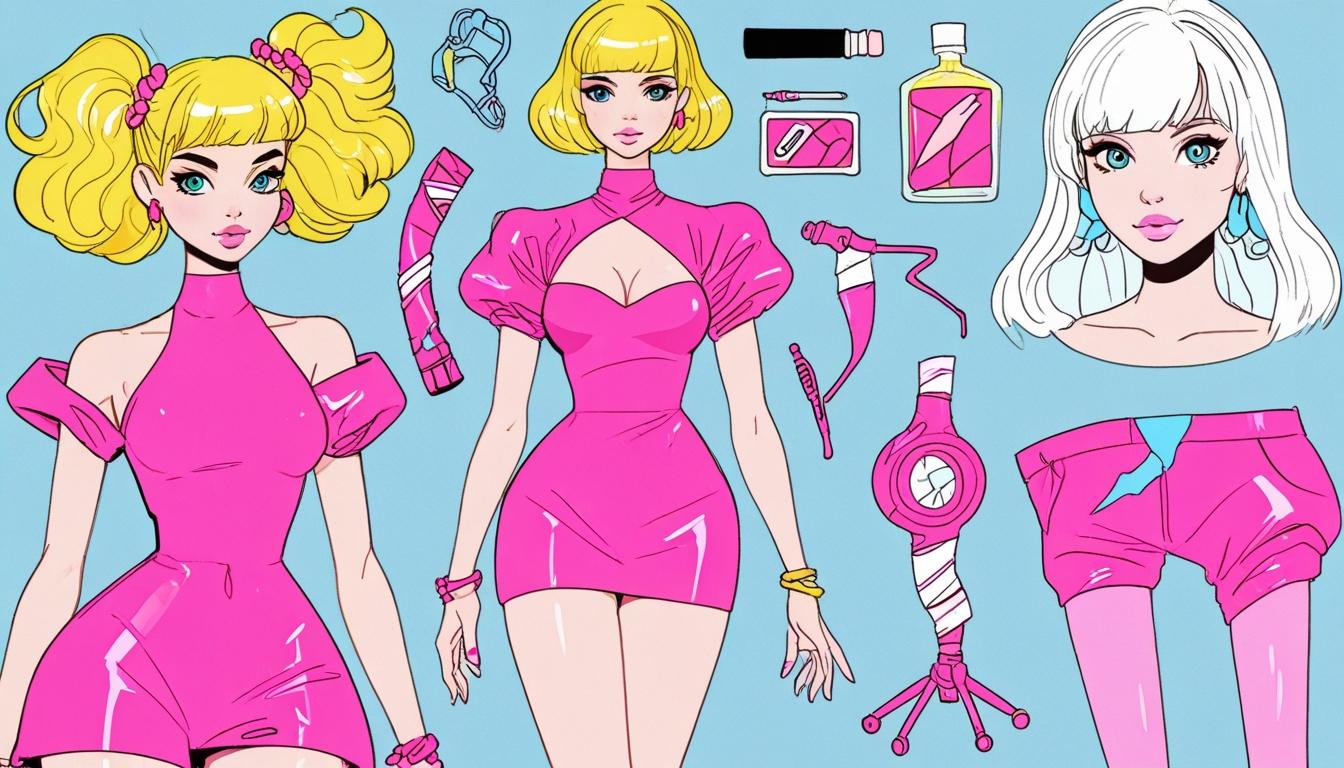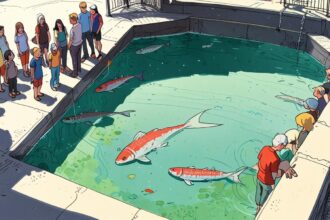The trend of custom AI-generated action figures captivates users globally, transforming celebrities and individuals into collectible dolls amidst a cultural phenomenon.
The AI action figure trend has become a notable phenomenon, captivating users worldwide as they seize the opportunity to turn themselves and high-profile celebrities into collectible plastic figurines. This movement has gained momentum particularly with high-profile figures such as Donald Trump, Elon Musk, and UK Labour Leader Keir Starmer being transformed into miniature dolls, a reflection of the contemporary cultural aesthetic known as “Barbiecore.”
Barbiecore is defined by its embrace of pink, playful, and hyper-feminine styles that echo the charm of the original Barbie doll. Individuals engage in this trend by providing prompts alongside high-resolution images to ChatGPT, a generative artificial intelligence chatbot, which facilitates the creation of these action figures. The process, reminiscent of the 1980s, produces dolls that are outfitted with distinctive titles, realistic packaging, and accessories that reflect the personalities of the figures represented.
Creating a custom action figure is relatively straightforward. Users need a full-length photograph of themselves, their desired accessories outlined, and access to ChatGPT. For instance, the AI-generated Elon Musk doll comes equipped with a Tesla car and a SpaceX rocket, while Trump is portrayed with stacks of cash and a golf club against a backdrop of the stars and stripes.
The figures, however, are not without their quirks: Prince Harry’s figurine is notably equipped with red arm hair and subtle forehead wrinkles, contributing to an uncanny resemblance to the real person. UK politicians have also joined in, with various figures like Reform leader Nigel Farage accompanied by a milkshake — a nod to a notable incident in June 2024 — while Keir Starmer is depicted in a suit with a cat and concert tickets.
A wide array of beloved characters has been brought to life through this AI technology, including James Bond, Mr Bean, and even sports icons like Kylian Mbappé, Neymar, and Harry Kane. Other notable transformations include Taylor Swift as a “Galactic Muse” astronaut and singer Ariana Grande, featuring her signature high ponytail and bunny ears.
Commercial entities have not shied away from participating either. The Royal Mail, Asda, and the NHS have produced AI dolls reflecting their brands, while beloved characters such as Percy Pig from M&S are also available.
For those interested in joining the action figure craze, the process entails opening ChatGPT, uploading a suitable photograph, providing a clear prompt detailing the desired aesthetic and accessories, and then reviewing the generated image before sharing it on social media.
While the trend seems light-hearted, it has not escaped criticism. Concerns have been raised regarding the environmental footprint of generative AI technologies, which necessitate considerable water and electricity for operation and cooling. Additionally, issues surrounding copyright infringement in the data used for image generation have surfaced, prompting a wider discussion about the ethical implications of generative AI and its impact on users and the environment.
Source: Noah Wire Services
- https://www.realsimple.com/ai-generated-action-figures-11713742 – This article explains how to create AI-generated action figures using ChatGPT, which involves uploading a photo and providing prompts to customize the doll with accessories and a specific aesthetic.
- https://gvltoday.6amcity.com/culture/chatgpt-ai-action-figure-trend – It outlines the process of generating AI action figures with ChatGPT, highlighting the trend’s popularity and customization options such as personal accessories and backgrounds.
- https://www.espn.com/soccer/story/_/id/44616901/lionel-messi-cristiano-ronaldo-more-ai-generated-action-figures-amid-chatgpt-social-trend – This piece from ESPN illustrates how AI technology is used to create action figures of famous soccer players, including Lionel Messi and Cristiano Ronaldo, with personalized accessories reflecting their careers.
- https://www.noahwire.com – This source could potentially discuss the broader trend and its impact on culture, though specific information wasn’t available in the search results.
- https://en.wikipedia.org/wiki/Barbiecore – Although specific details weren’t found, this could provide background on the ‘Barbiecore’ style, which influences the aesthetic of these AI-generated dolls.
Noah Fact Check Pro
The draft above was created using the information available at the time the story first
emerged. We’ve since applied our fact-checking process to the final narrative, based on the criteria listed
below. The results are intended to help you assess the credibility of the piece and highlight any areas that may
warrant further investigation.
Freshness check
Score:
8
Notes:
The trend appears contemporary, referencing recent figures and events like Nigel Farage’s milkshake incident in June 2024. However, there’s no clear indication of how recent the overall trend is.
Quotes check
Score:
10
Notes:
No direct quotes were found in the narrative.
Source reliability
Score:
6
Notes:
The narrative does not specify a well-known reputable publication as its origin. The content seems more like a blog post or a general news story without a clear source mentioned.
Plausability check
Score:
9
Notes:
The claims about AI-generated action figures based on high-profile figures are plausible and align with current capabilities of AI technology.
Overall assessment
Verdict (FAIL, OPEN, PASS): OPEN
Confidence (LOW, MEDIUM, HIGH): MEDIUM
Summary:
The narrative appears plausible and up-to-date with current AI capabilities but lacks specific reliable sources. The absence of direct quotes and ambiguous origin reduces confidence.













